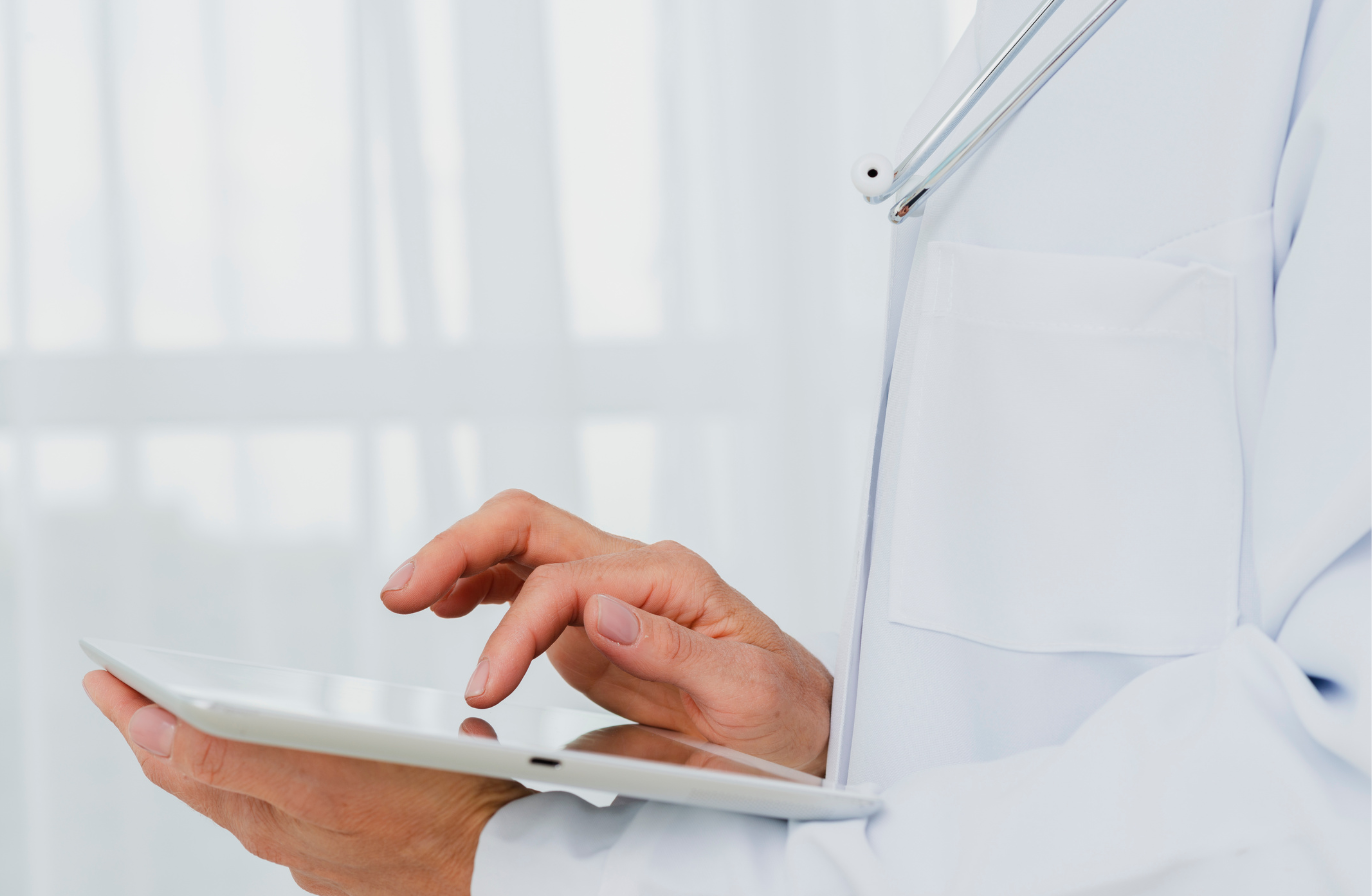Social media’s role in healthcare is undeniably complex, versatile and transformative.
However, marketers working in the healthcare sector need to carefully balance their social media marketing efforts with the many challenges of this industry related to privacy, misinformation, and regulations compliance.
In this article, we'll explore the vast social media healthcare landscape, pinpointing key social media strategy tips, highlighting the main benefits of social media in healthcare and best healthcare marketing best practices.
We'll also have a look at the common pitfalls to avoid, and the main regulations social media marketers need to stay compliant with.
Table of Contents
Why is social media marketing valuable for the healthcare industry?
Best practices for social media in healthcare
The most engaging social media content pillars for the healthcare brands
What to avoid in healthcare social media marketing
Key regulations to follow in the healthcare industry
FAQs about social media in healthcare
Why is social media marketing valuable for the healthcare industry?
By now, you might be starting to grasp the importance of social media in healthcare, but how exactly does this medium influence such a large and complex industry?
In other words, which of the following describes the benefits of social media in healthcare?
Let’s find out.
Empowering patient education
One way in which social media marketing in the healthcare industry proves valuable is through patient education.
Sharing valuable insights on various health conditions, new courses of treatment, preventive and healthy lifestyle choices is a great way to educate the general public and inspire them to take better care of themselves. And social media is the perfect medium to distribute this kind of information.
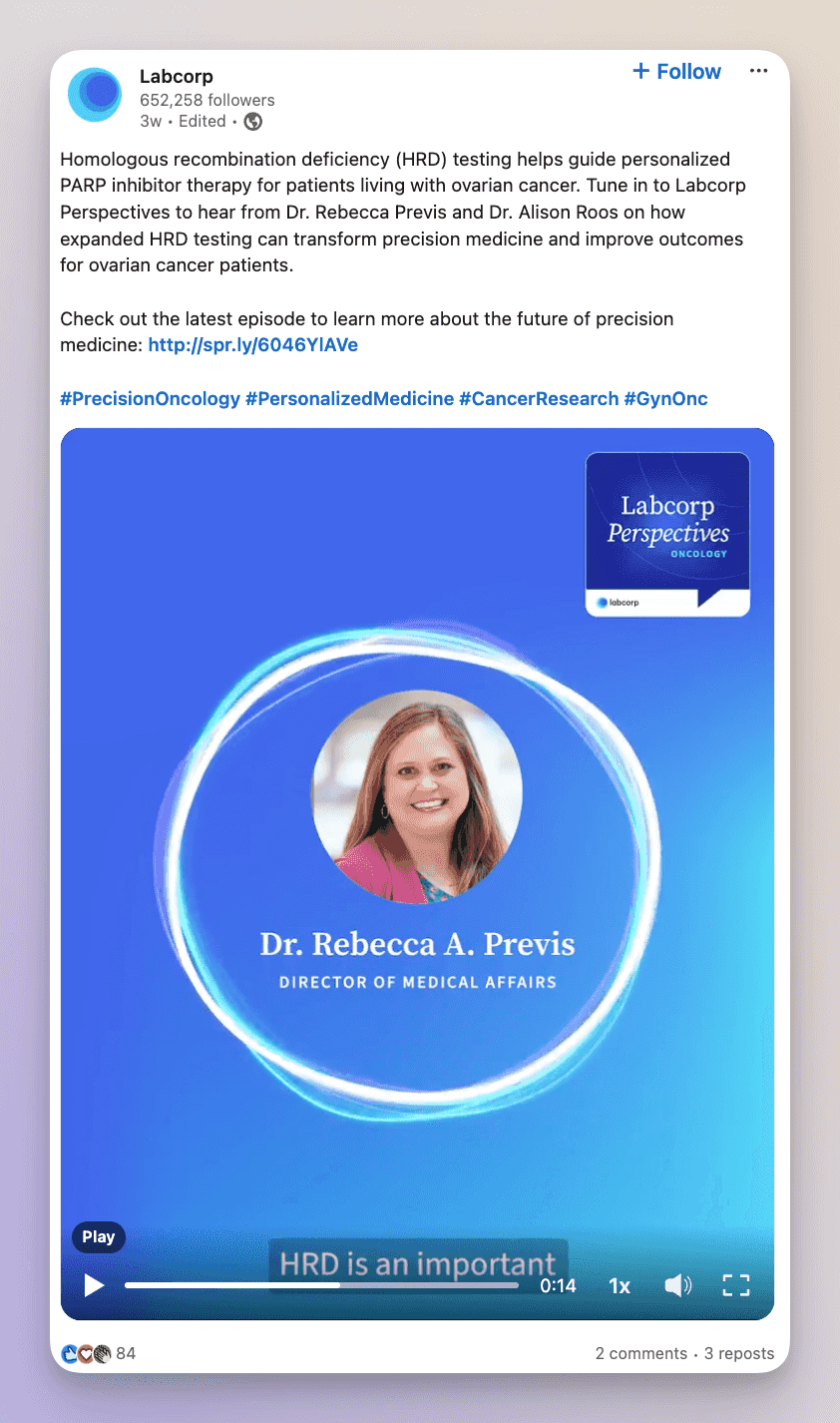
Social media health content is more than free information. It empowers patients to take a proactive role in managing their health and seeking advice and comfort from medical professionals and online support groups.
Highlighting patient stories and testimonials
Healthcare is as much about medical advancements as it is about people feeling supported through their health journeys. By sharing true stories and testimonials of patients on social media channels, healthcare brands can effectively build an emotional connection with their audience, inspire others, and have a huge impact on their state of mind.
If someone were to ask what are the strengths of using social media in healthcare, then drawing attention to success stories, highlighting resilience and the way people cope or overcome huge health challenges is one of the best answers you could give.
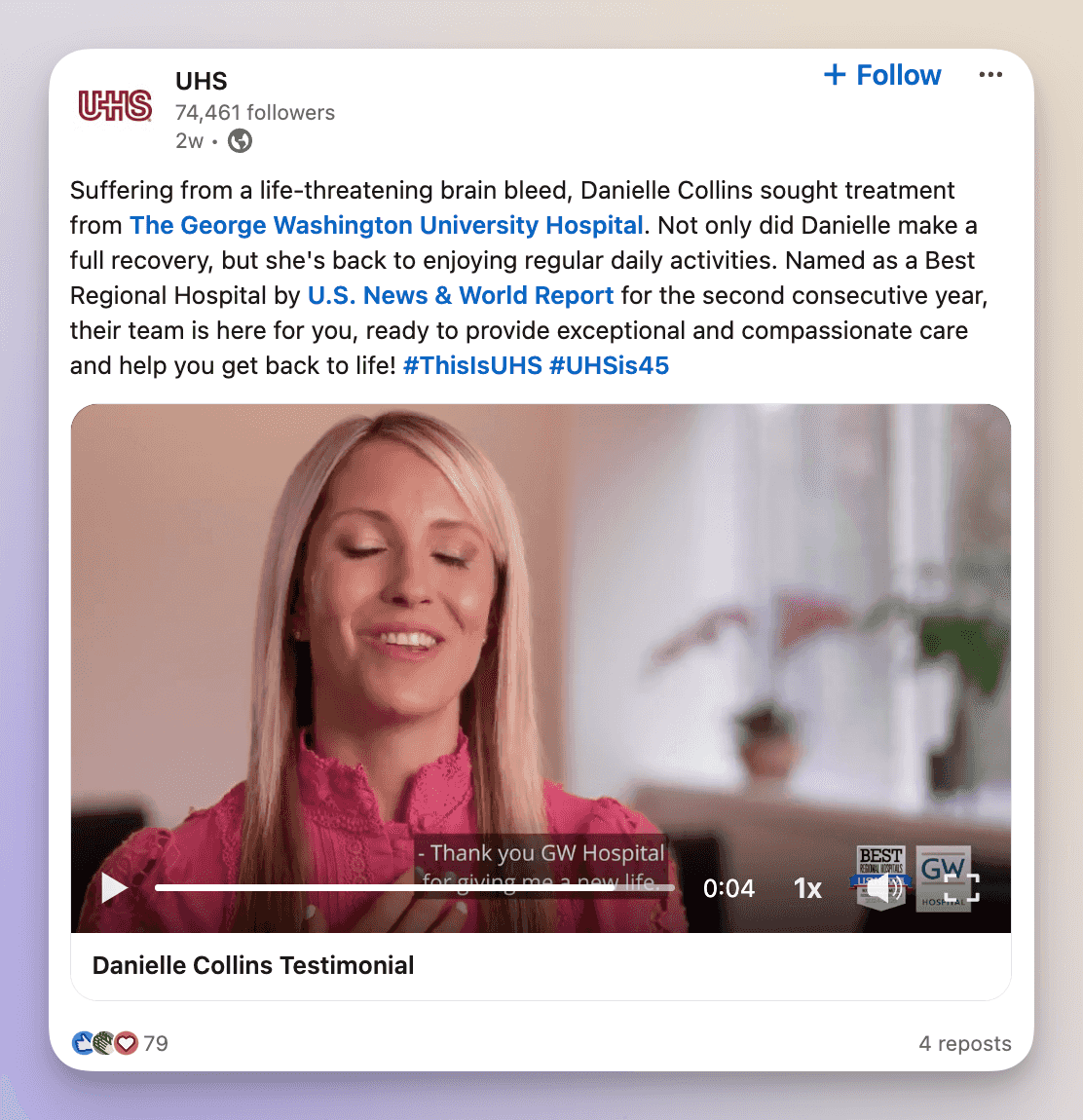
Raising public awareness
One of the biggest benefits of social media in healthcare is its positive influence on raising public awareness.
Creating public health social media campaigns focused on disease monitoring and prevention, vaccination, and best practices in healthcare that have the potential to reach millions of people globally is a great way to draw attention to important health issues.
The key is to break down complex topics into eye-catching, educational content, which can supply anyone, regardless of their age and background, with a set of actional tips that they can easily implement.
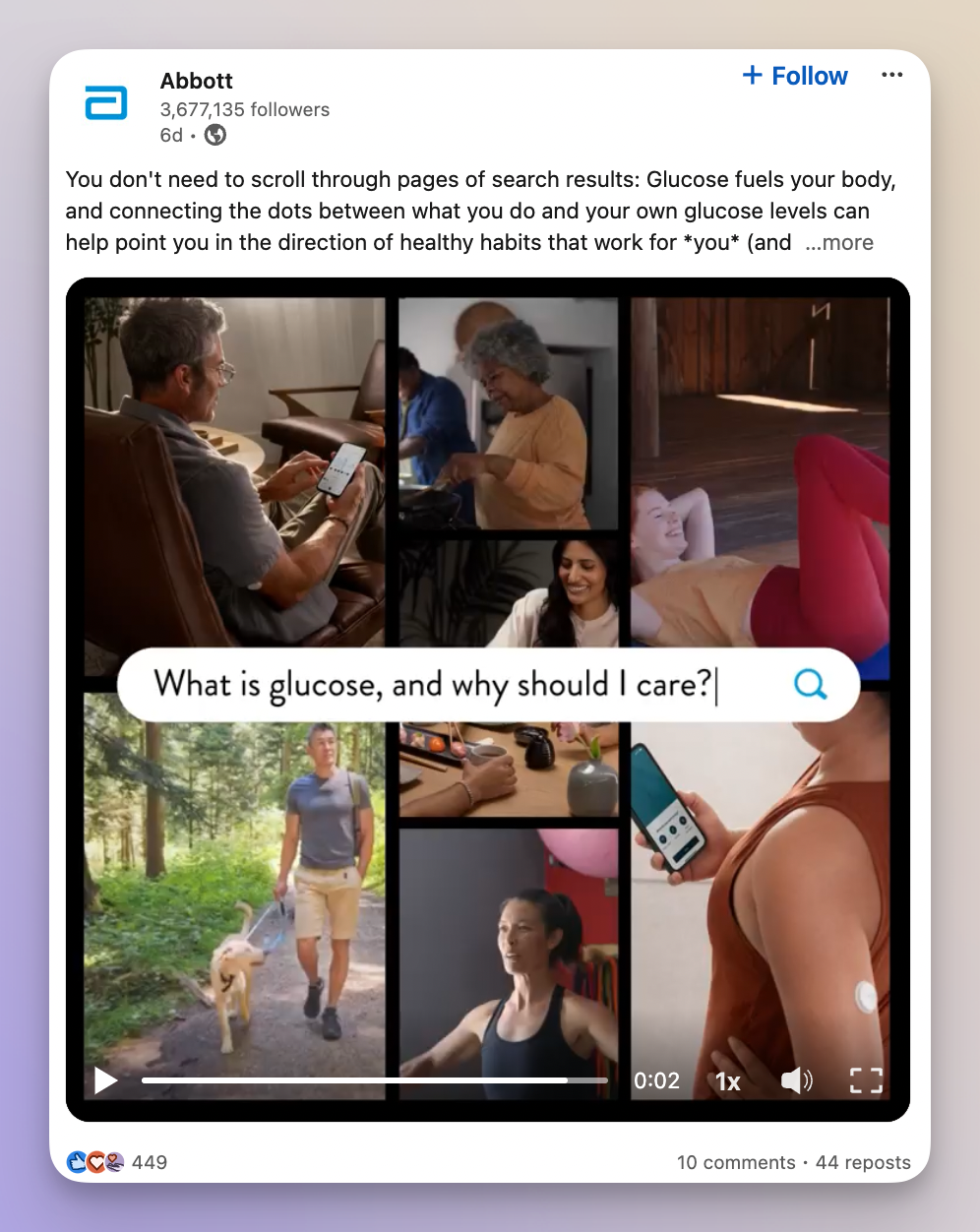
Combating misinformation
The best and worst thing about the internet is that it is incredibly vast, and the flow of information is generally very hard to control. Anyone can share their opinions on social media, and sometimes they’re taken at face value, even if they are not based on any facts.
That’s why one of the roles and benefits of social media in the healthcare sector is correcting misinformation. Healthcare organizations and medical professionals can effectively stop the spread of inaccurate health information before it leads to public health risks.
Building brand reputation
Besides taking part in social media health campaigns, healthcare brands also rely on social media to build up their reputation by highlighting key achievements that contribute to a better public perception.
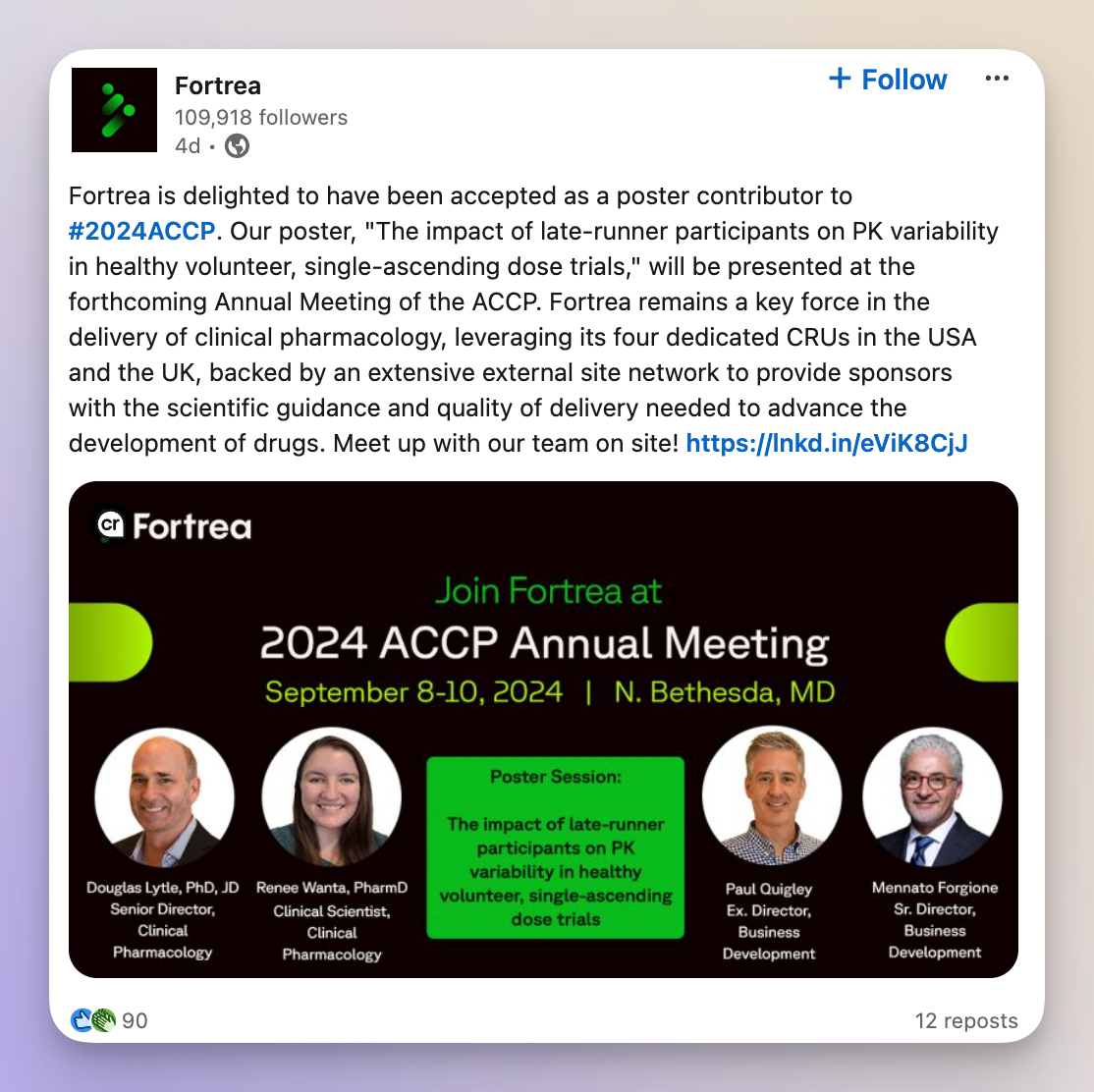
Healthcare companies that (humbly) share this kind of milestone with their audience have a chance to improve their reputation and brand loyalty and establish themselves as trusted medical institutions.
Crisis communication
During health crises, such as pandemics, many people turn to media outlets for essential updates. In this context, a big element of social media marketing in healthcare is crisis communication.
In other words, social media can serve as a tool for disseminating essential information quickly, combating fake news and providing constant updates on the development of emergency situations.
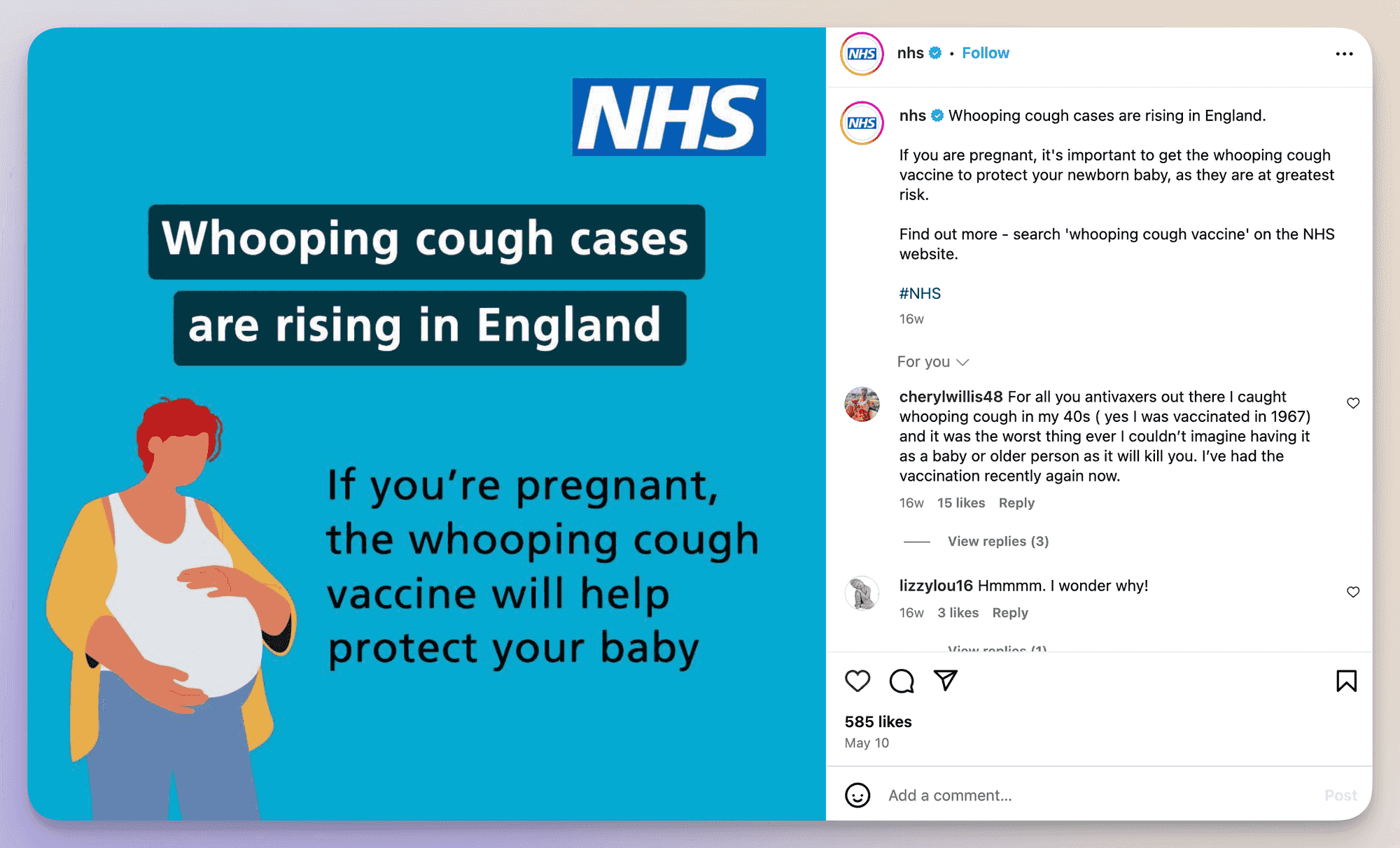
Showcasing the company’s culture, values and opportunities
Last but not least, one of the advantages of social media in healthcare is the chance to showcase a healthcare brand or organization's culture and values and attract new potential employees.
Sharing behind-the-scenes social media content or candid interviews with medical professionals can offer a glimpse into their daily operations and workplace environment and ultimately humanize the brand.
This is particularly relevant in the case of social media marketing for hospitals, which aim to engage with their community online and create a sense of reliability and care.
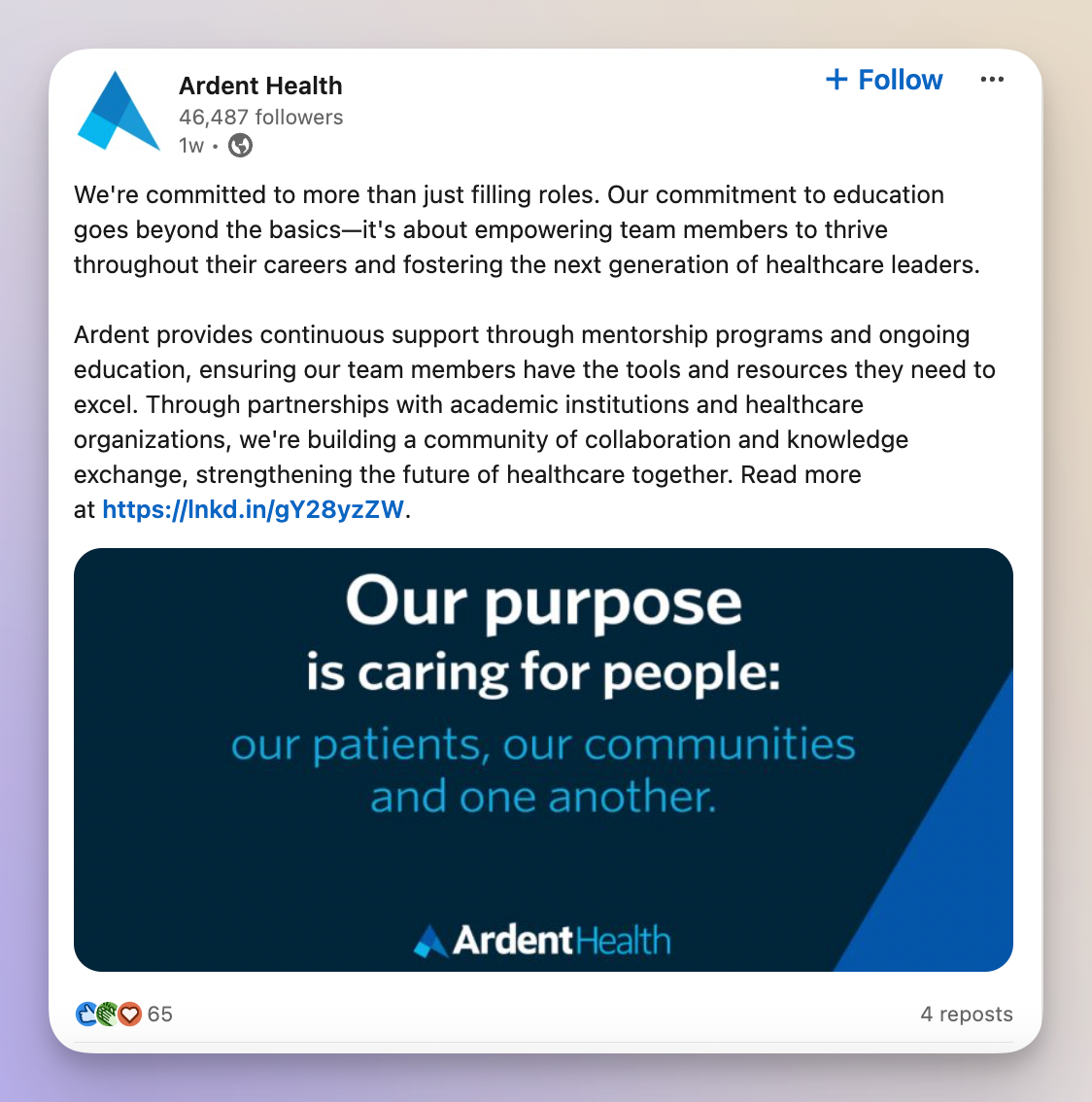
Best practices for social media in healthcare
When developing a social media strategy for healthcare, marketers should follow a set of best practices to make sure they create the best possible content for their target audience.
Practicing social listening, partnering with influencers and taking part in global online events are just some of the ways in which this can be achieved.
So how does the healthcare industry use marketing, exactly? Let’s explore some of the most common examples of best practices in healthcare.
Leverage social media listening
Through social listening, marketers in the healthcare industry can more easily spot public health trends as soon as they emerge, find market gaps and get insights into patient needs, concerns and experiences in real time. They can use this data to create tailored content that caters specifically to their target audience.
Seeing as the healthcare sector is particularly vulnerable to the spread of misinformation, monitoring online conversations and tracking hashtags can also help healthcare brands identify, address and correct false information circulating online.
Monitor industry trends and data
The healthcare industry is a complex one, which makes social media trends rather hard to predict. That’s why social media managers for health brands should constantly monitor industry trends and data and adjust their strategy based on what the numbers say.
Here's a great example of successfully leveraging social media trends from Abbott's LinkedIn page.
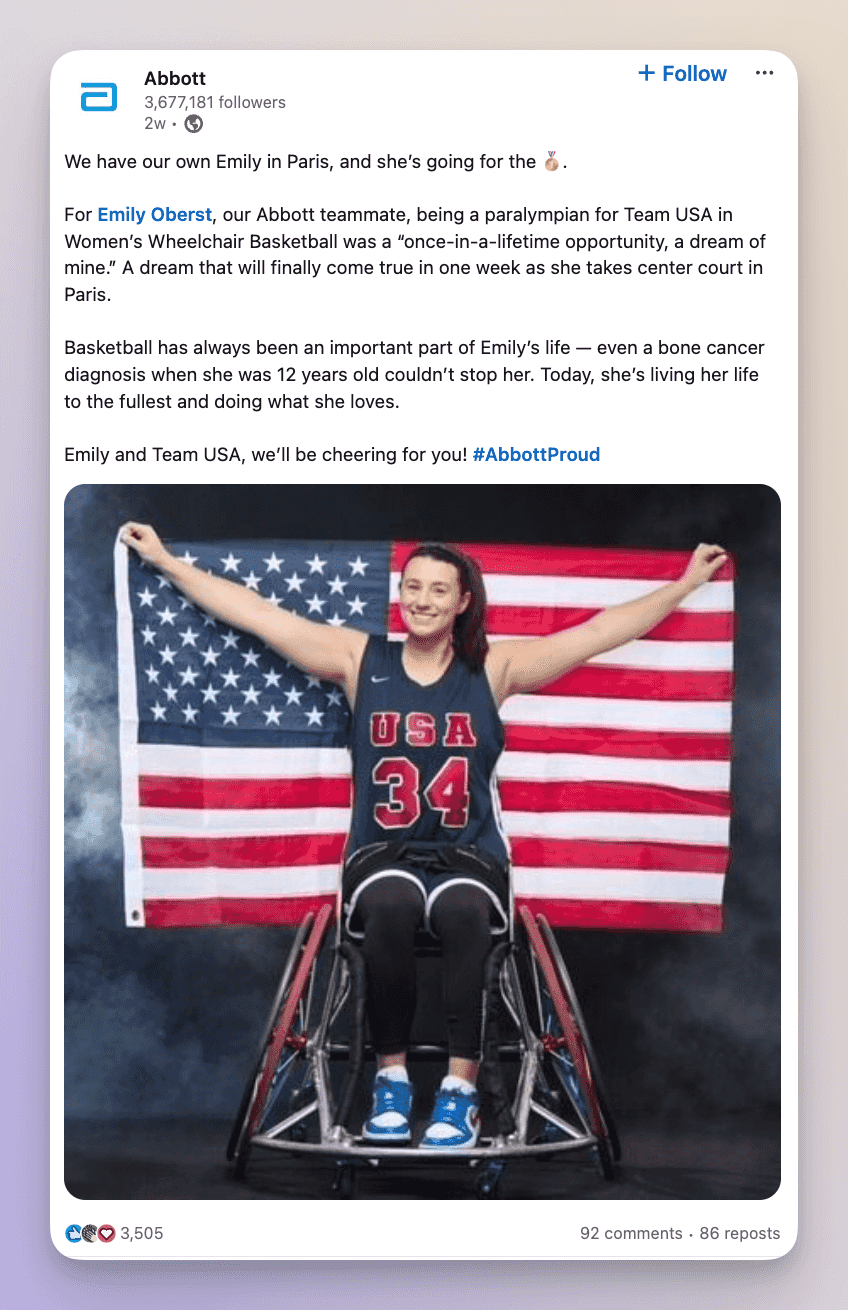
From the very start, you can tell that Abbott’s post ticks a lot of boxes: it talks about the Paris Olympics, a major event and highly engaging topic at the time of publishing, it highlights the emotional and inspiring story of a disabled employee and it keeps the caption rather short and positive.
As a result, the post generated over 3,400 reactions so far, as well as many comments. Due to its inspiring nature, it was shared (reposted) quite a lot.
Analyzing performance data and trends from your own content and those of competitors is crucial for shaping the marketing strategy and proving social media ROI.
Keeping an eye on competitors' strategies can provide some inspiration and may reveal market gaps that your brand is qualified to fill.
This is as true for healthcare as for any other major, complex industry.
To check real-time social media benchmarks, it’s best to use competitive analysis tools such as Socialinsider.
Partner up with influencers
Collaborating with healthcare influencers with a strong social media presence can be an efficient way to amplify your brand’s message and expand your social media reach, regardless of whether you’re aiming for a broader audience or targeting a niche audience that is more likely to engage with your brand.
Popular figures in the healthcare sphere, such as Dr. Mike, frequently work with healthcare brands and medical organizations to raise awareness about various health issues, highlight recent medical breakthroughs, promote new product lines and ultimately bring new audiences into the fold.
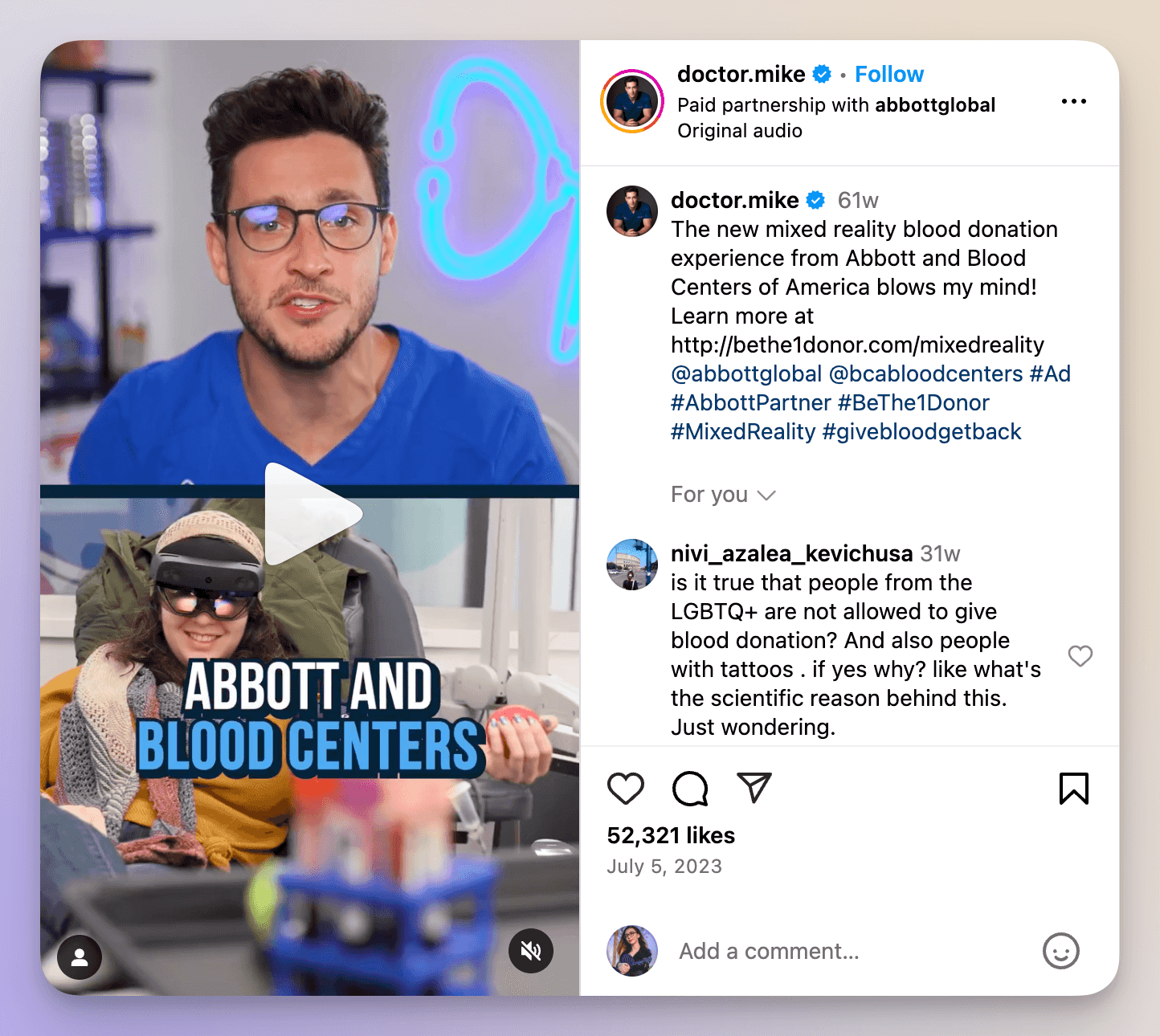
One thing to keep in mind when partnering with creators in the health sphere is that they need to be properly vetted.
Your audience is more inclined to trust influencers that have some degree of medical expertise and truly understand the products, services and data they are promoting.
People might get skeptical if influencers lean more into commercial promotion than genuine health advice – therefore, it's crucial to establish a clear and credible tone from the start.
At the end of the day, any disconnect between the influencer's behavior and the brand's image can severely damage the brand’s credibility. This is why, in the healthcare sector, influencer marketing is very closely tied to social media reputation management.
Take part in global events
One of the best-kept secrets when it comes to healthcare marketing best practices is to constantly keep an eye on global events.
Social media plays an essential role in global social media health campaigns such as World Heart Day, World Mental Health Month and World No Tobacco Day, and even in smaller but still impactful campaigns such as the ALS Ice Bucket Challenge. Together, these initiatives raise awareness on a global scale, encouraging participation and dialogue across different countries and cultures.
They are a great way to improve your account’s reach and social media engagement and of course, a good opportunity as any to draw attention to important health matters.
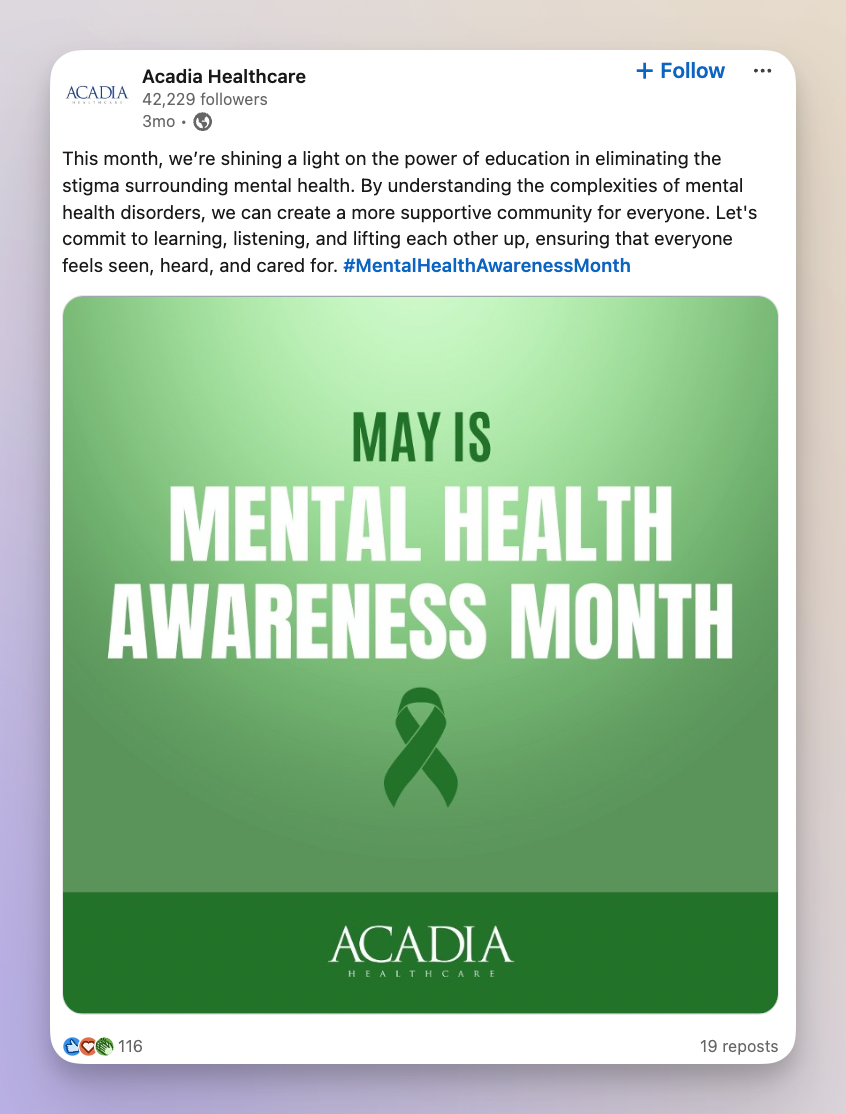
Create a dialogue through Q&As and webinars
In healthcare, perhaps more than in any other industry, people have a lot of questions. The difference here is that their questions are more often born out of necessity not curiosity.
The COVID-19 outbreak, for instance, was a time of great uncertainty where people had a lot of questions about the disease, the outcome, treatment, etc.

Integrate user-generated content
In the healthcare industry, first-person accounts and personal stories are crucial for building trust and relatability and promoting higher engagement. So don’t shy away from adopting and sharing user-generated content such as testimonials, as it sets you on the path to more impactful content.
Authentic stories and testimonials work to reinforce the notion that your particular healthcare brand or organization has a track record of providing exceptional care and achieving positive results.
Focus your efforts on the right social media platforms
A common misconception about social media, regardless of the industry, is that you need to be present on all channels in order to achieve peak visibility, engagement and build a large community.
In reality, it’s best to focus your marketing efforts on a few selected platforms that work for your healthcare brand and your social media goals.
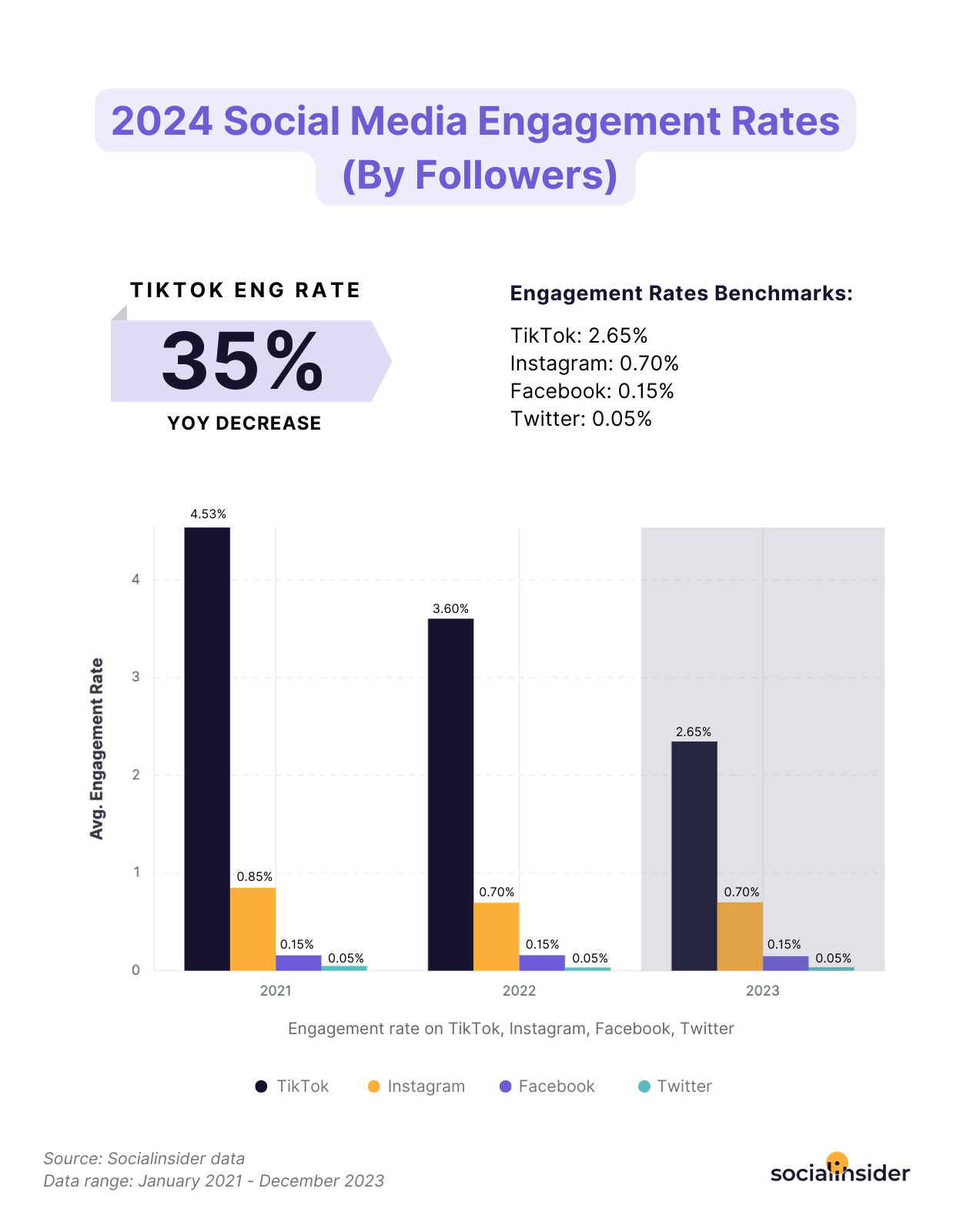
To be clear, there’s no best social media platform for healthcare. The “right platform” won’t be the same for everybody, because it depends on the type of needs you have as a brand, what type of products or services you promote and the type of content you are willing to share.
So let’s have a rundown of the most commonly used social media platforms in healthcare, and what benefits each one of them brings to the table:
LinkedIn for the healthcare industry
LinkedIn is the ideal platform for networking with other professionals, sharing industry news & reports. It is also a great place to share infographics, breaking down complex topics into digestible information for your audience.
With LinkedIn’s more recent updates, the algorithm also encourages you to share more video content, so that’s one way you could expand your LinkedIn marketing strategy.
Facebook for the healthcare industry
Facebook is great for building a community around your brand using the Groups feature and establishing a two-way communication channel between your brand and its followers. Not only will this type of community bring you closer to your audience, it will also help you learn more about them, which in turn translates to more social media post ideas for healthcare.
Instagram for the healthcare industry
Instagram is wonderful for visual storytelling and reaching younger audiences. There’s really no shortage of Instagram post ideas you can implement in healthcare, from sharing patient stories and behind-the-scenes content to public hashtag campaigns. By following the latest Instagram trends you can also learn about trending songs and challenges and use them in your content to boost engagement.
YouTube for the healthcare industry
the go-to platform for long-form educational content and a must-have for any healthcare brand that has a video marketing strategy. As a healthcare company, you can use YouTube to share in-depth tutorials or industry updates and share patient testimonials. If you also post on other video-heavy platforms, you can repurpose some of that content to share on YouTube Shorts.
TikTok for the healthcare industry
While it may not be the most conventional social media platform for the healthcare sector, a lot of healthcare brands are experimenting with TikTok ideas to create more lighthearted content that is still relevant for their brand. And let’s not forget about TikTok influencer marketing. Healthcare companies can benefit from amplifying their message on this platform by collaborating with key influencers.
The most engaging social media content pillars for the healthcare brands
As can be expected, here at Socialinsider we love data very much – so it should come as no surprise that we decided to dive deeper into social media data in the healthcare sector.
We analyzed over 6,000 social media posts from the top 40 healthcare companies published between July 2023 and June 2024 to uncover their key content themes, identify which ones drive the most engagement.
So here’s a list of the top 10 social media content pillars healthcare brands employ in their day to day LinkedIn marketing strategy to make sure their engagement keeps on growing every day.
The most engaging social media content pillars for the healthcare brands:
- Employee recognition
- Medical research
- Services offered
- Public health
- Community building
- Patient care
- Health access
- Technologies
- Innovations
- Collaborations
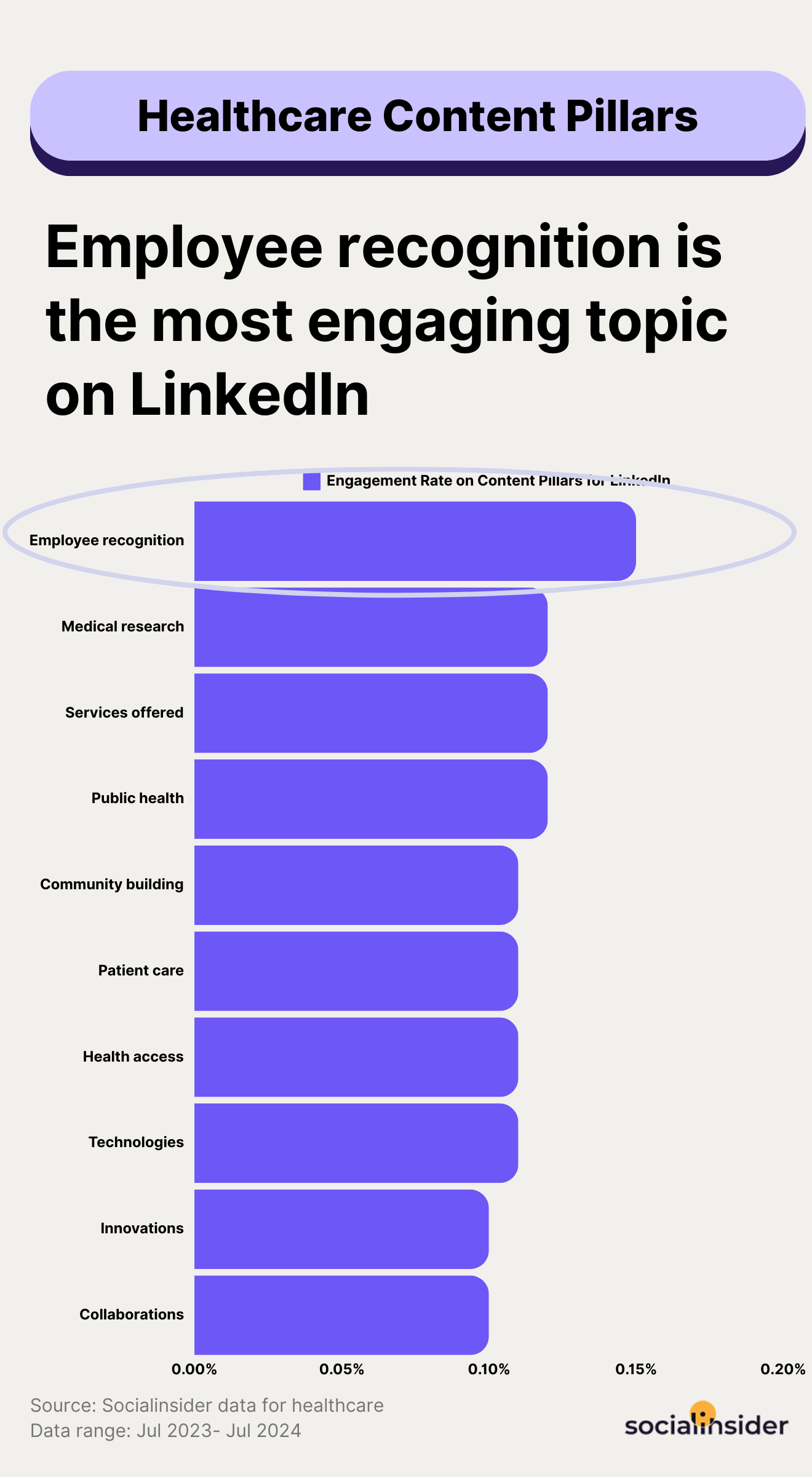
#1. Employee recognition
Surgeons, nurses, auxiliary staff, pharmacists, researchers — everyone working in a healthcare facility or organization deserves recognition, and marketers know this all too well.
Celebrating major milestones and publicly acknowledging an employee’s contribution to the company’s success goes a long way, and it is the type of content followers appreciate and engage with the most.
This explains why employee recognition ranked first in our list of most engaging content pillars in healthcare.
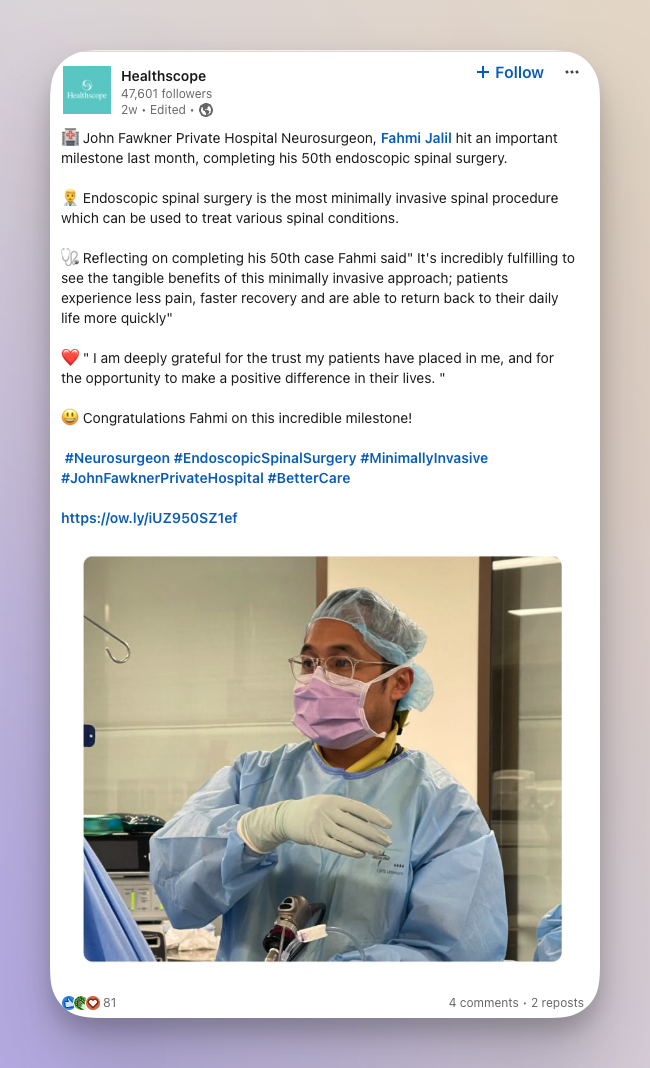
#2. Medical research
When it comes to best practices in healthcare industry, highlighting medical research is a great strategy that often pays off.
Some of the most engaging social media content in healthcare covers medical research and studies, including new findings, benefits, and contributions to the medical field.
Even if the audience doesn’t have the expertise to properly understand the details of every medical research report, sharing updates on the latest developments in medical science is still a valuable strategy for marketing in healthcare organizations, because it creates a sense of hope and commitment.
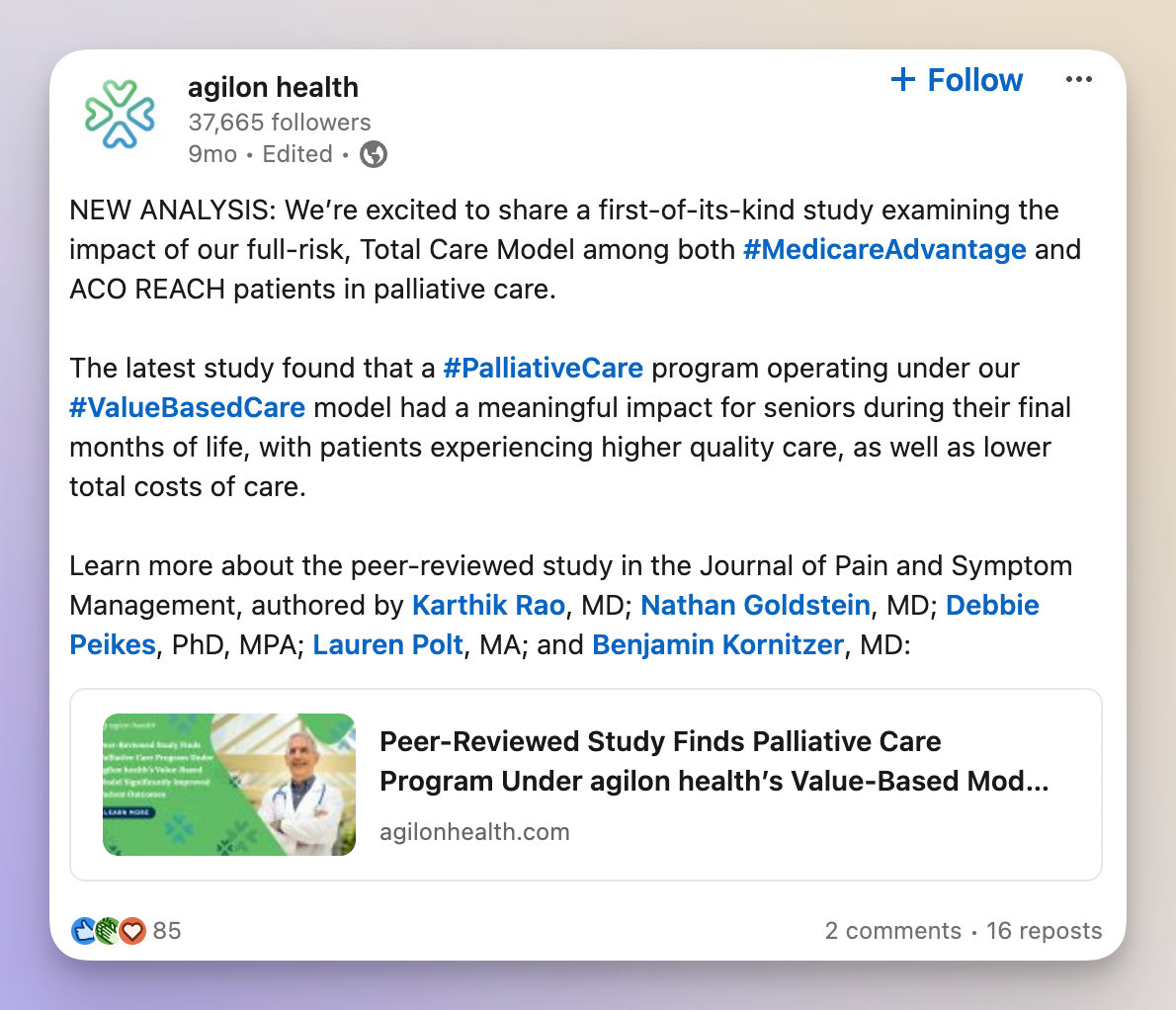
#3. Services offered
Of course, one of the ways in which brands approach marketing in healthcare is by promoting their own specialized health services and the impact these have on their community.
This typically includes testimonials, interviews or posts that detail individuals' health journeys and how the brand's products or services have contributed to their well-being.
So, if you’re wondering how to create content for social media in the healthcare industry, take a page from these brands and start by showcasing inspiring patient success stories.
This, of course, is a more popular strategy amongst medical institutions such as hospitals or rehabilitation centers.
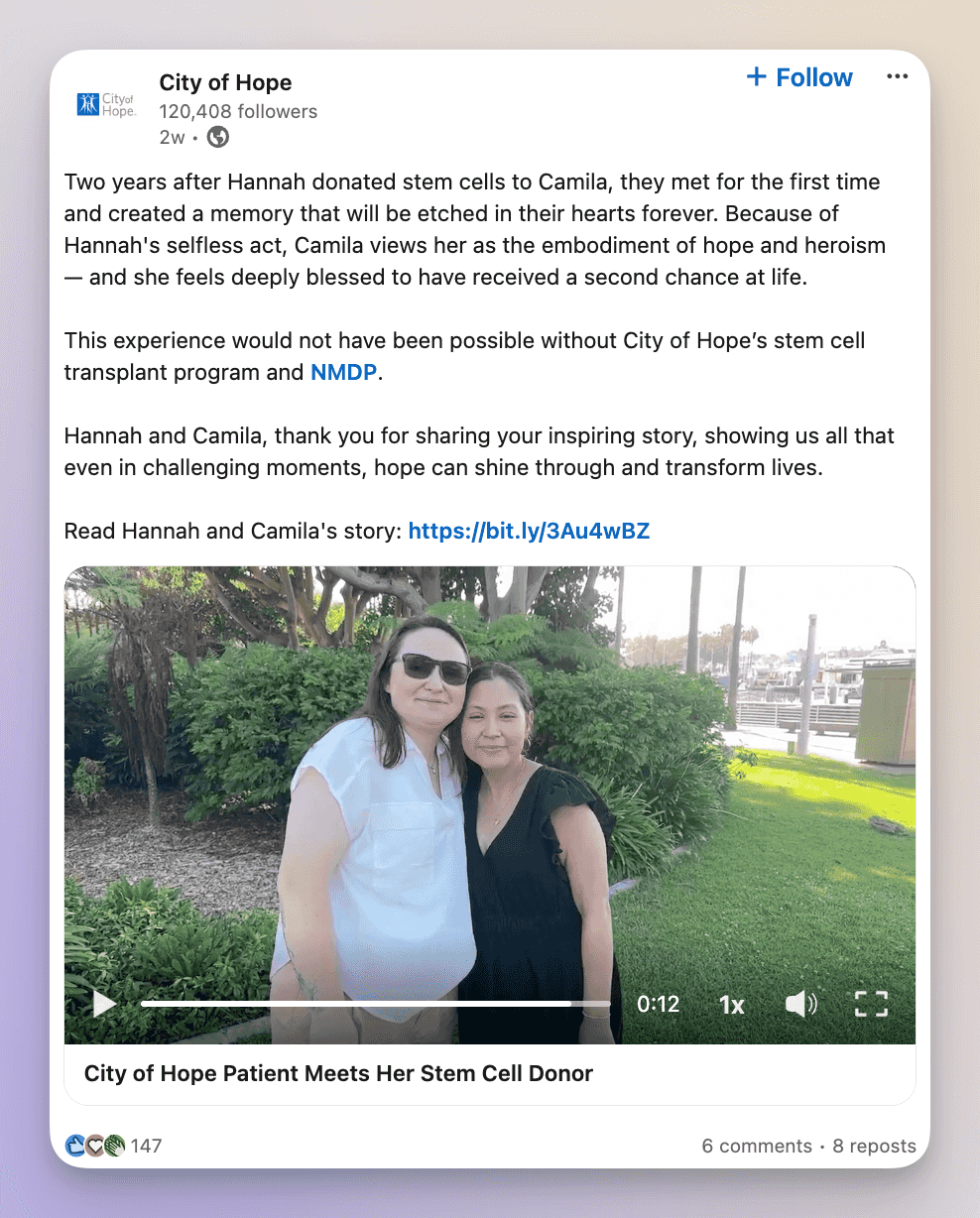
#4. Public health
From disease prevention to mental health awareness, creating public health and wellness campaigns has become a staple in social media marketing for health brands.
This enables health organizations to reach vast and diverse audiences, rally support for important causes and promote healthy behaviors and practices.
Through our analysis, we found this to be one of the most popular content pillars for social media, which confirms the fact that this is a common practice in the healthcare sector.
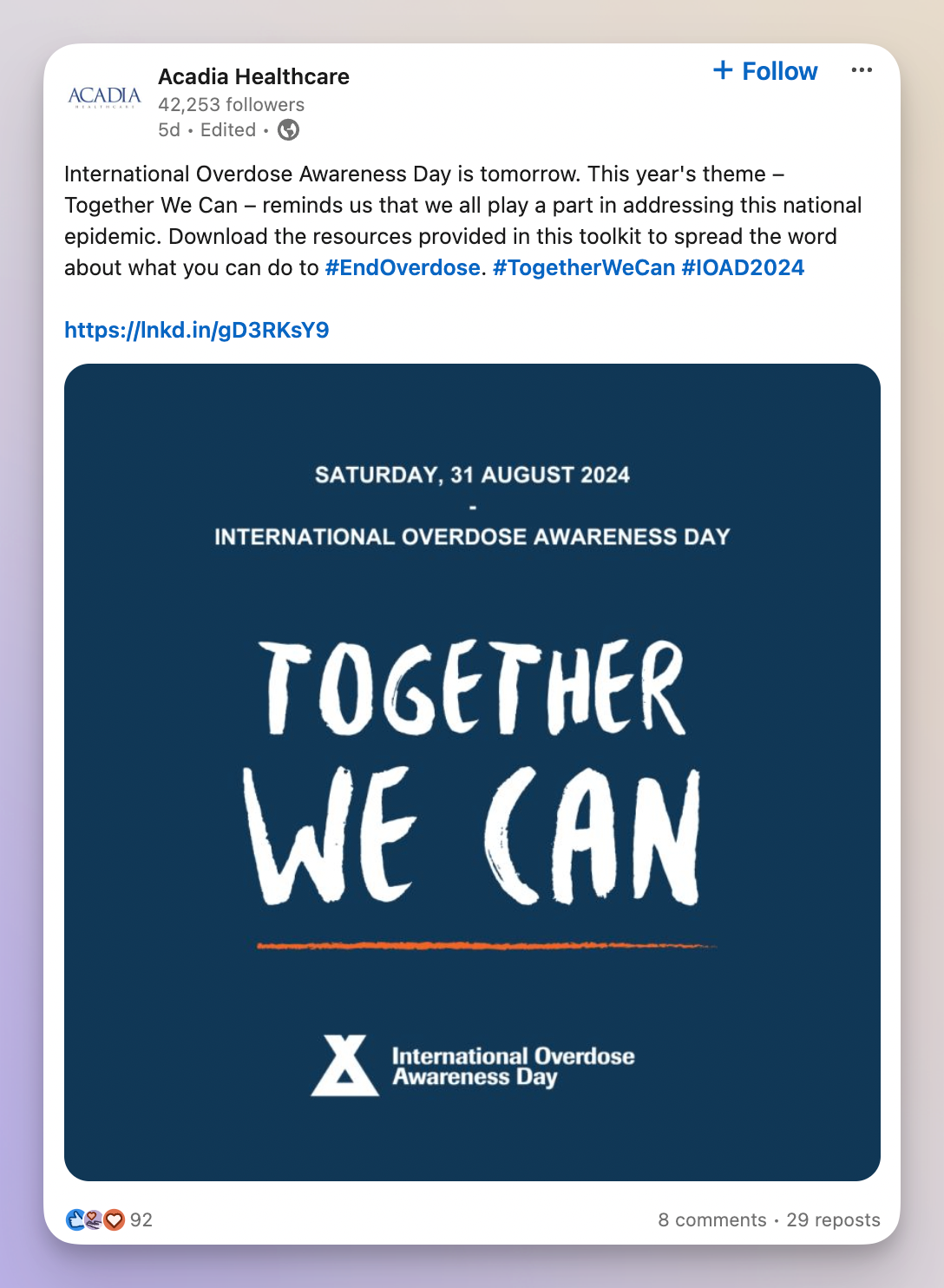
#5. Community building
Health system marketing also means building a sense of community, not just among patients but also among employees.
By organizing and promoting team activities, expressing gratitude and highlighting each employee’s contribution, healthcare brands communicate to the audience that they care about their employees just as much as they care about their patients.
Sharing all these “behind-the-scenes” moments serves to amplify their reach and impact and even help health companies to more easily recruit people to work.
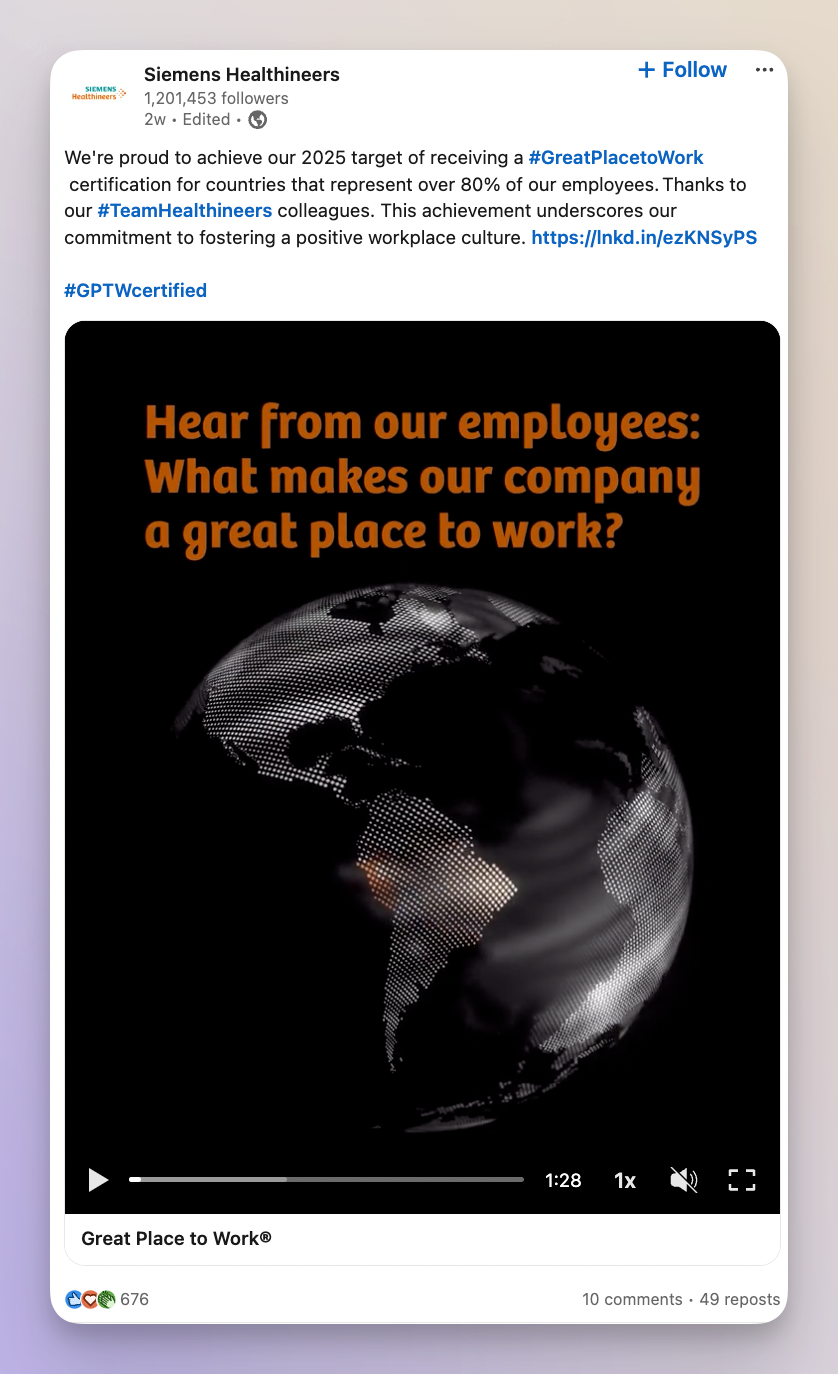
#6. Patient care and health education
Social media for healthcare surely has its challenges, but it’s also very rewarding and empowering, particularly when it comes to patient care and education.
Our own analysis of 6k posts reveals that many healthcare organizations focus their efforts on this type of content, and its success is reflected in the large number of social media interactions brands receive on their posts.
Social media facilitates health education through the sharing of educational content such as videos and infographics. In fact, when it comes to video marketing ideas, marketers have no shortage of topics to cover.
On the other hand, through social media, patients can communicate more easily with healthcare professionals and get instant feedback and support, which is definitely an improvement compared to the arduous and often expensive process most people have to go through to get medical advice from a doctor in a physical office.
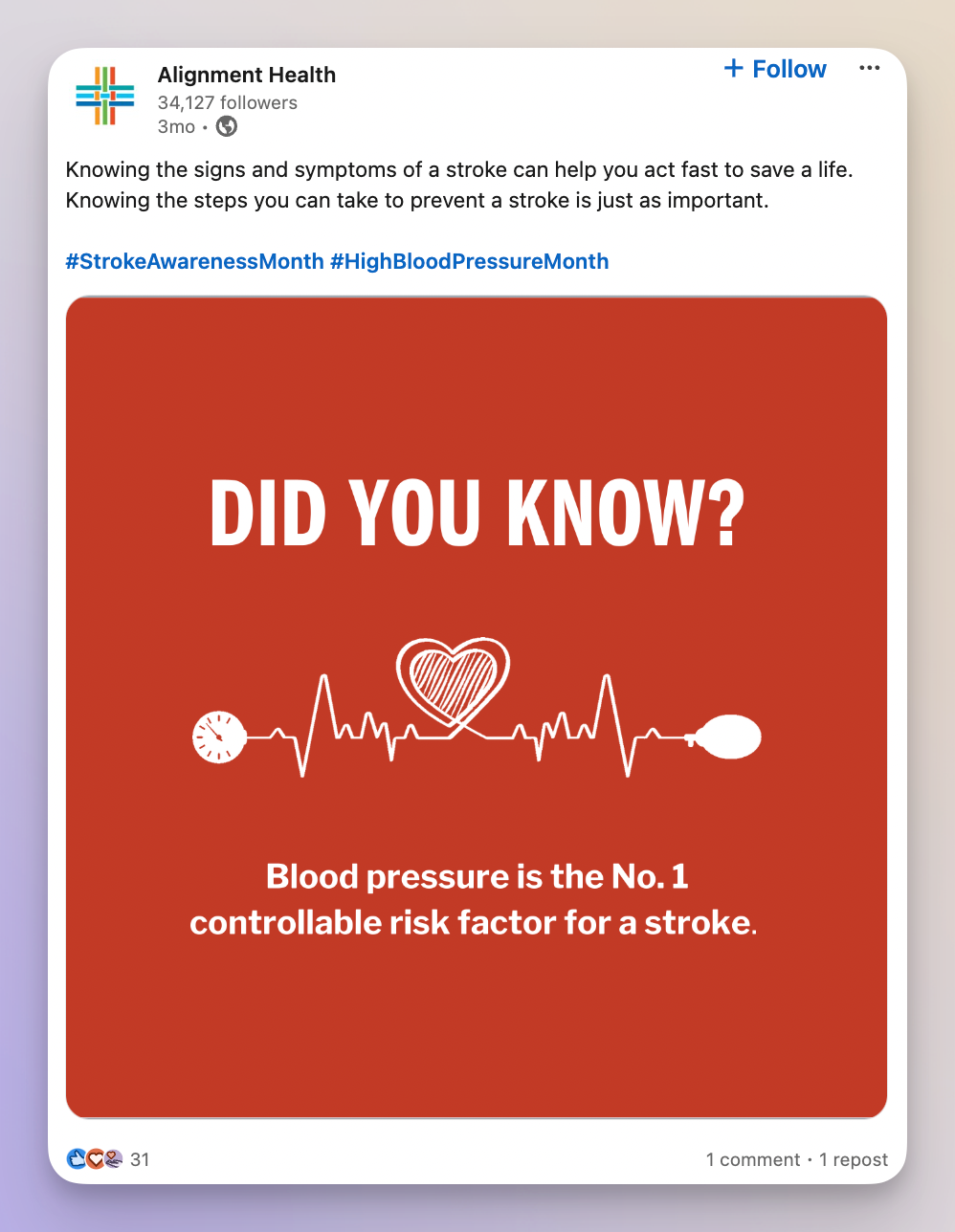
#7. Health equity & access
One major content pillar in healthcare industry marketing is the ongoing effort to bring health equity and access to healthcare for all – regardless of age, race, gender, background and financial status.
Therefore, one of the main marketing strategies for healthcare organizations is to bring awareness to the current status quo and try to challenge it. Many brands share posts highlighting inequalities in the healthcare system and showcasing their commitment to repairing this situation.
Most discussions are focused on mental health and debilitating health issues like cancer or autoimmune diseases.
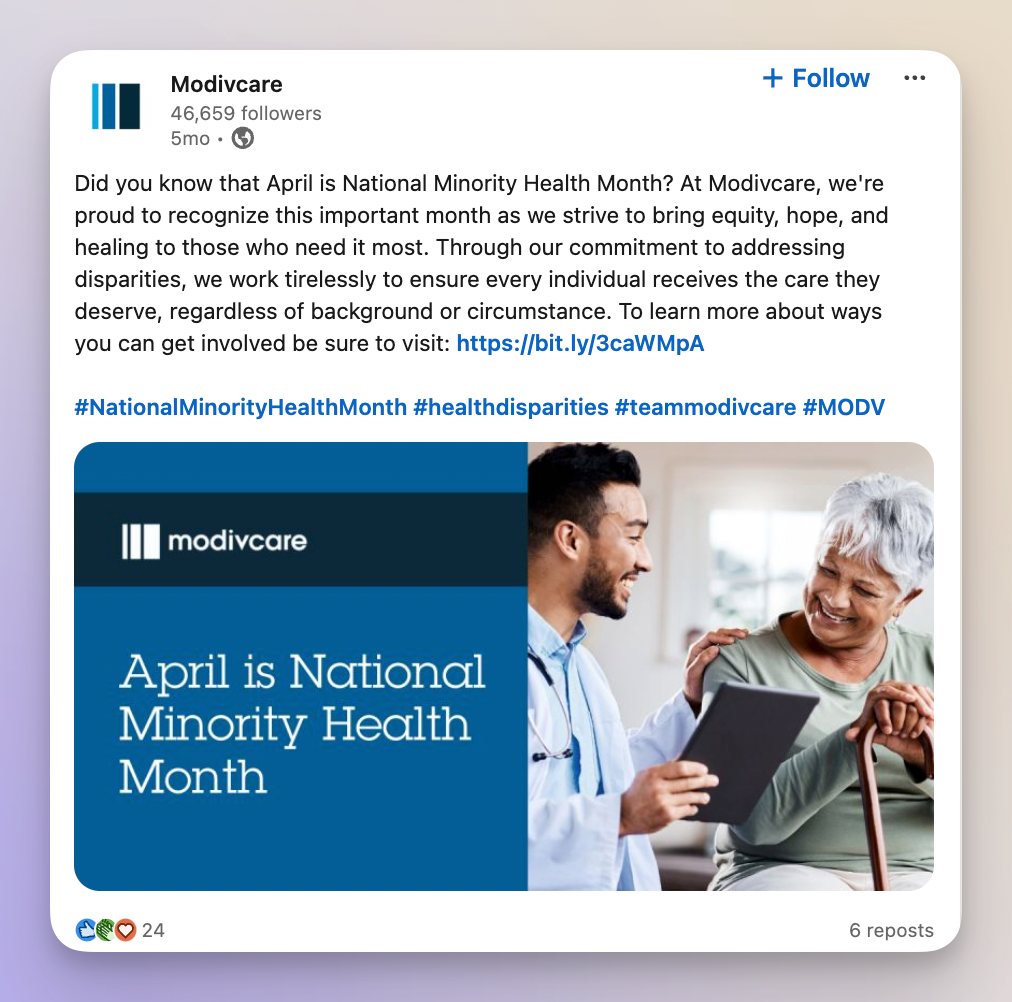
Advancements in healthcare technology and equipment
Technology is important for health organizations or institutions that want to position themselves at the forefront of medical technology and want to be seen as drivers of innovation in this industry.
Social media content about healthcare technology can be engaging if it’s presented correctly, in a way the audience can digest the information. At the end of the day, people care most of all about how these medical advancements improve patient care – so that is usually the focus of this type of content.
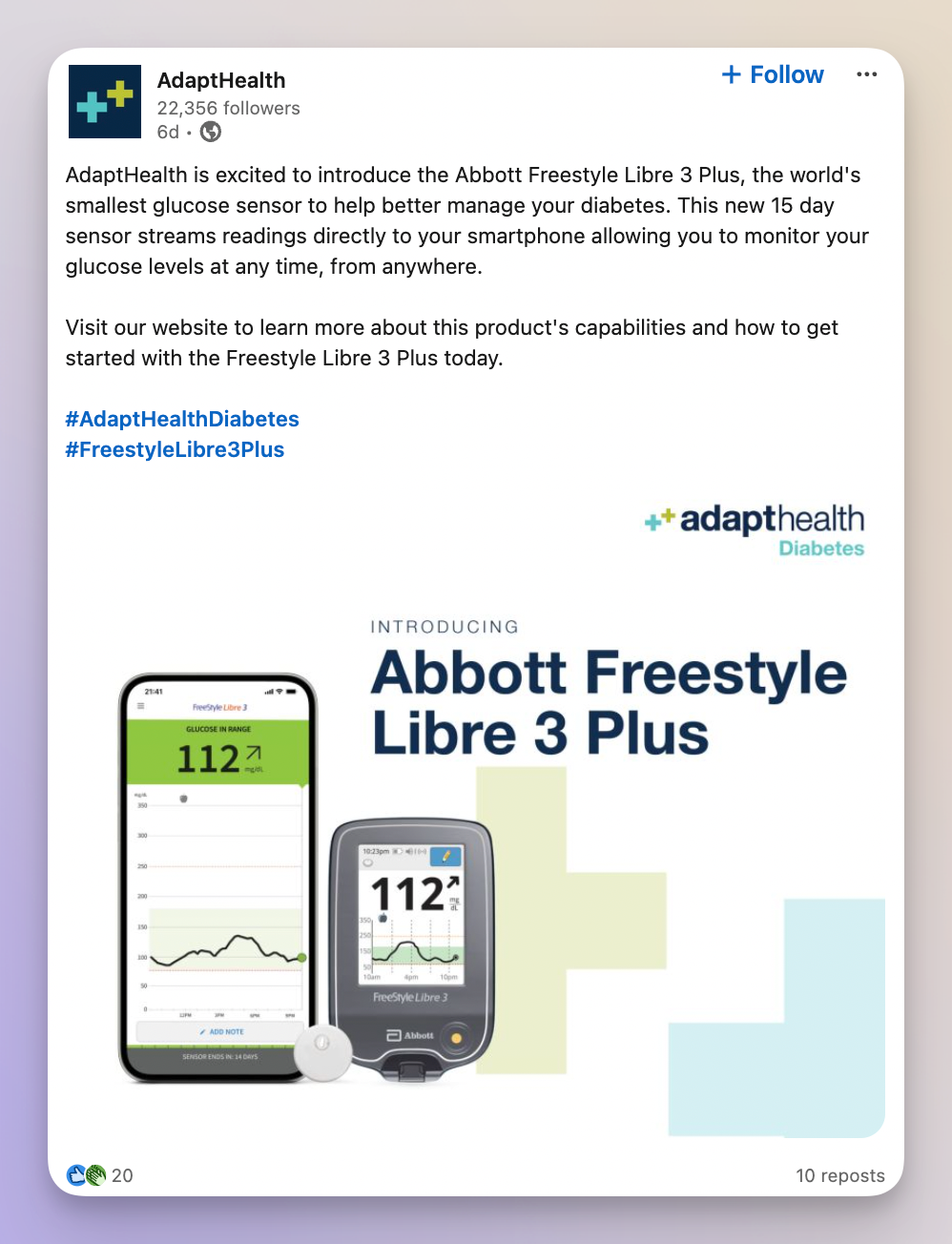
#9. Innovative practices that improve patient care
The medical industry is constantly evolving, and innovative practices and advancements are the ones that drive it further. As a result, a lot of social media content in the healthcare sector is created around this topic.
Talking about cutting-edge practices is a great way to build trust with patients, and show a brand's dedication to staying at the forefront of medical innovation, which in turn reflects a commitment to constantly improve patient care.
Whether it’s AI-powered diagnostics, robotic surgery, 3D printed organs or any other innovation making its way to the mainstream healthcare system, people following health brands on social media are happy to hear about and engage with this type of insightful content.
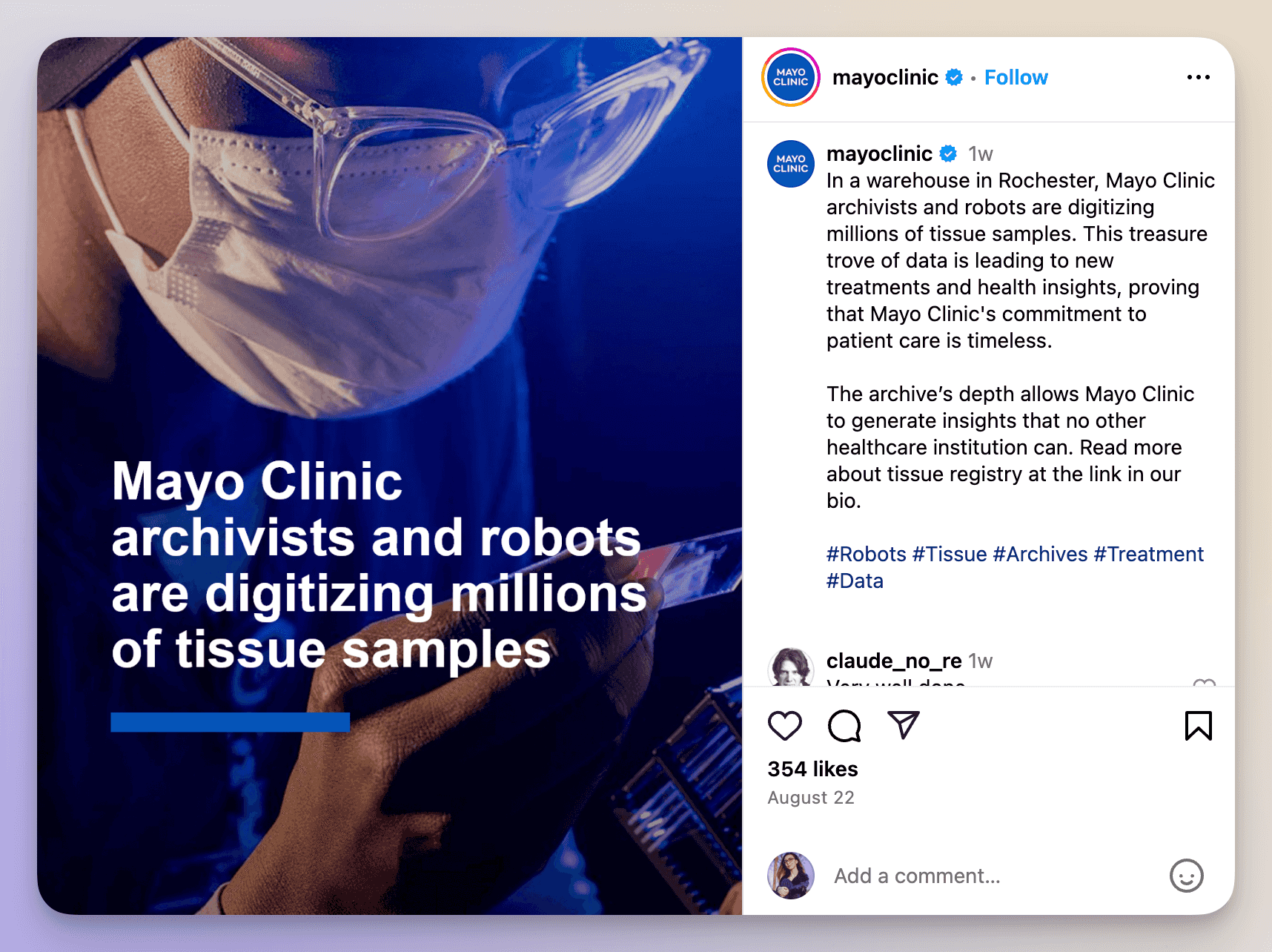
#10. Important partnerships and collaborations
Teamwork makes the dream work – and that’s as true in healthcare as in everything else.
Healthcare brands or organizations often collaborate with one another to promote their services, improve their capacity to provide patient care, launch new products or extend their reach into new markets.
Sharing collaborations and partnerships on social media ultimately helps brands build trust with their audience and promote their commitment to improving patient care. Some of these collaborations even result in educational content for the public, such as interviews, webinars or live Q&A sessions.

What to avoid in healthcare social media marketing
As we’ve seen so far, the healthcare industry is highly diverse and full of opportunities for brands to share content that is not only educational and inspirational but also genuinely valuable to their audience.
But what about inappropriate content? What type of content is considered unsuitable for social media in the healthcare industry?
Let’s explore a few examples of the topics and practices that healthcare companies should avoid when posting on social media.
Disregarding patient privacy
One of the grave sins of digital marketing for healthcare providers is sharing confidential patient information, accidentally or on purpose.
Not only is this a breach of the HIPAA patient confidentiality regulation (leading to serious legal consequences), but it also creates deep distrust in medical professionals and institutions.
What to do instead 👇
If the information is already publicly shared, try to delete all posts revealing personal (health) information. If you plan to cover case studies or success stories, make sure to keep all patient information anonymous or ask for consent before sharing it to social media.
Sharing false or unverified data
A common challenge social media marketers face when doing digital marketing in the healthcare industry refers to the sharing of unverified data.
Healthcare brands can very quickly and easily lose the trust of their audience by sharing misleading or unverified information that can potentially harm patients. If you’re not ready to support any claims you make on social media, then don’t make them in the first place.
What to do instead 👇
Even if it takes longer, wait to verify every piece of information you share publicly on social media on behalf of a healthcare institution. Be ready to back your claims with reliable sources or medical experts.
Leaning too heavily into promotion
When advertising in the healthcare industry, one of the most common pitfalls is to engage in overly-promotional content.
Discussions in the healthcare industry are usually sensitive in nature and people are prone to skepticism, so any kind of content that appears too commercial can come across as insincere.
What to do instead 👇
Focus on providing value to and educating your audience rather than pushing products or services. Try to present any brand product or service in the content of a patient story, highlighting the impact it has on patient care but not trying to convince your audience to take a specific action towards your company.
Responding negatively to feedback
Learning how to react to feedback can be considered one of the bigger challenges of social media in healthcare.
Social media is a massive, largely unmoderated space, where everybody can freely speak their mind. So negative comments or reviews are inevitable.
However, defensive or dismissive reactions often make the situation worse and again, leads to a loss of trust from your audience.
What to do instead 👇
Respond from a place of empathy, don’t base any remarks on personal bias or judgment, and try to offer practical solutions whenever possible.
Neglecting the accessibility aspect
People have come to expect healthcare companies to be mindful of accessibility concerns.
So, for instance, sharing images without alt text and not providing captions for your video content are two things you should definitely avoid when marketing for healthcare organizations.
What to do instead 👇
Tailor your content so that it can be accessible to anyone, regardless of disability, age and ethnicity.
Ignoring social media analytics insights
Trying to create a winning social media strategy for healthcare without constantly monitoring social media analytics is not a good idea.
Simply looking at follower growth or the average number of likes you get on posts is not enough to understand what resonates with your audience.
What to do instead 👇
A key part of social media management for health brands is measuring performance.
By relying on tools such as Socialinsider, which can help any social media strategist or healthcare social media companies keep track of performance across multiple social media channels at all time, gather competitive insights and gain an in-depth understanding of what works and what doesn’t for a particular brand.
Also, actively engage with your community, as that in itself can provide valuable social media insights.
Not speaking the audience’s language
One of the social media marketing challenges for healthcare companies is finding the right language and tone when speaking to their audience.
For the sake of professionalism, some healthcare brands fall into the trap of speaking too formally or using a lot of medical jargon, which the public usually fails to understand. This creates a disconnect between the brand and its audience, and leads to lack of engagement.
What to do instead 👇
Drop some of the medical jargon and replace it with simple language that anyone can understand. Aim for a tone that is both empathetic and approachable, and try your best to humanize social media content, even when it tackles complex topics.
Key regulations to follow in the healthcare industry
Anyone working in healthcare knows it’s a very, if not the most regulated industry of all. These regulations serve to ensure patient safety and data protection, and uphold ethical practices.
However challenging it may be to keep track of them all, any social media manager working in healthcare must be aware of these laws and regulations and make sure they adhere to every single one that applies to their organization.
With that in mind, here are the main healthcare regulations, regulatory bodies and guidelines that healthcare marketers should follow
HIPAA
The Health Insurance Portability and Accountability Act, enacted in the U.S. back in 1996 and updated regularly, is designed to protect patient’s health information (PHI), and dictates how PHI can be used and/or shared.
As for what patient health information includes, any personal info (identifier) such as name, medical records, photos, and any other identifiable information is covered by HIPAA. In total, 18 different identifiers fall under HIPAA protection.
FDA
The Food & Drug Administration (FDA) is a federal organization that regulates the safety, security and efficacy of drugs, medical devices, and biological products. It also safeguards human safety in clinical trials and approves new drugs and medical devices only after they undergo rigorous testing.
This organization also monitors labeling and advertising of prescription drugs, which is why it’s so relevant for anyone doing social media marketing for health brands.
GDPR
General Data Protection Regulation (GDPR) is a data protection law in the European Union that applies to any organization handling personal data of EU citizens. To adhere to this law, social media managers in healthcare need to obtain explicit consent from anyone before collecting and sharing their personal data online.
The law also states that individuals have the “right to be forgotten” meaning that they should
FTC
The Federal Trade Commission (FTC) in the U.S. oversees advertising practices, including on social media, to ensure they are not truthful and not misleading. To that effect, healthcare marketers should make sure that all their sponsored content and paid endorsements are properly labeled as such on social media.
MDR
Medical Device Regulations (MDR) in Europe governs marketing and promotion of medical devices, including on social media. These regulations are designed to regulate the safety and performance of medical devices in Europe.
This law requires all marketing posts describing or promoting medical devices be supported by clinical evidence, and all adverse effects of a medical device promoted online be reported as soon as they happen.
State or country-specific laws and regulations
Any healthcare company aiming to do social media advertising for health products or services in a specific region needs to first check and become aware of the laws and regulations regarding healthcare advertising practices in that area.
Healthcare ethical guidelines for patient interaction
While these may not be legally binding, ethical guidelines should be at the back of every social media manager’s mind when interacting with their audience on social media.
To properly follow these guidelines, marketers should enforce and maintain boundaries in their social media interactions with patients and avoid giving personalized medical advice, even when solicited.
Crisis management regulations
Public health emergencies may enforce new regulations or guidelines for communication on social media, so healthcare brands must monitor the official channels for real-time information on this topic.
In general, if you plan to share public health crisis updates, it’s best to coordinate with the local health departments and align your messaging with official statements from the CDC, WHO or other pertinent sources.
And of course, it's vital to steer clear of sharing unverified information. Instead, prioritize creating educational content that keeps people informed without causing unnecessary fear.
Final thoughts
If the pandemic has taught us anything, it’s that social media has the potential to shape the face of the healthcare industry. While healthcare brands might face challenges in navigating social media, their efforts often pay off.
It’s absolutely crucial to follow best practices in healthcare and avoid sharing misleading or unverified information, focusing too much on self-promotion or disregarding patient privacy altogether.
At the end of the day, using social media in healthcare not only amplifies the reach of vital information but also helps create stronger connections with patients, making healthcare more accessible to everyone.
FAQs about social media in healthcare
Which platforms are most effective for social media marketing for brands within the healthcare industry?
LinkedIn and Instagram are some of the most commonly used channels for sharing informative content and fostering connections. However, every social media platform has its own strengths and challenges when it comes to social media marketing in the healthcare sector, so the choice ultimately depends on each brand’s goals and preferences.
What are some challenges for social media marketing in the healthcare sector?
Social media managers doing digital marketing for hospitals and health brands have to comply with several rules and regulations that oversee the advertising of health products and services, which is in itself quite challenging. Brands need to be sure at all times that no content accidentally exposes any patient's personal health information. Another major challenge health marketers face is communicating complex medical topics in a way that is easily understandable to the general public.
